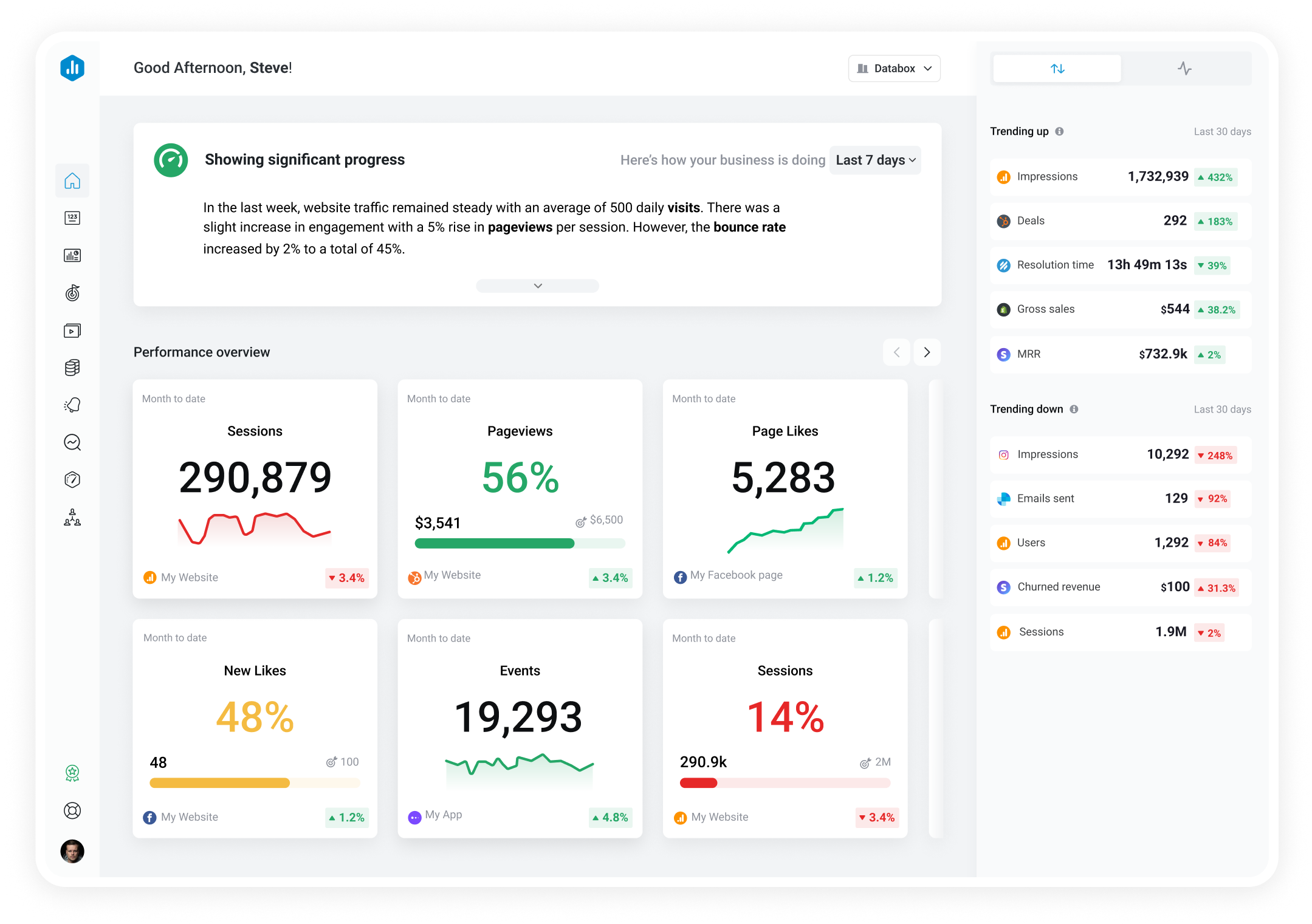Track all of your key business metrics from one screen
GET STARTED
 Outreach
Calls Answered
Outreach
Calls Answered Calls Answered metric represents the number of incoming calls that were answered by a team or agent within a set timeframe, indicating their responsiveness and availability to address customer needs and inquiries.
With Databox you can track all your metrics from various data sources in one place.

Used to show a simple Metric or to draw attention to one key number.
Databox is a business analytics software that allows you to track and visualize your most important metrics from any data source in one centralized platform.
To track Calls Answered using Databox, follow these steps:
 Goals
Goals Scorecards
Scorecards Metric Digest
Metric Digest Metric Builder
Metric Builder Data Calculations
Data Calculations Performance Screen
Performance Screen